Best
Portable
Piano Bench
X-Style Bench both affordable and perfect
-
Overall:
Weight Capacity: 300 lbs -
Best Feature:
All-welded construction. -
TedScore™:
7/10
Best
Overall
Piano Bench
-
Overall: Sturdy, solid wood bench with thick cushion for comfortable playing
-
Best Feature: Adjustable height for your preferred playing position
-
TedScore™: 9/10
Best
Student
Piano Bench
Piano Bench the comfort and support you need
-
Overall:
Padded bench for piano and keyboard players -
Best Feature:
Metal frame for durability -
TedScore™:
8/10
Have you ever wondered why piano benches don’t have backs?
As a pianist who’s spent much time on a bench, there’s a good reason for it. The backless design is essential for how we play and sit comfortably with the piano.
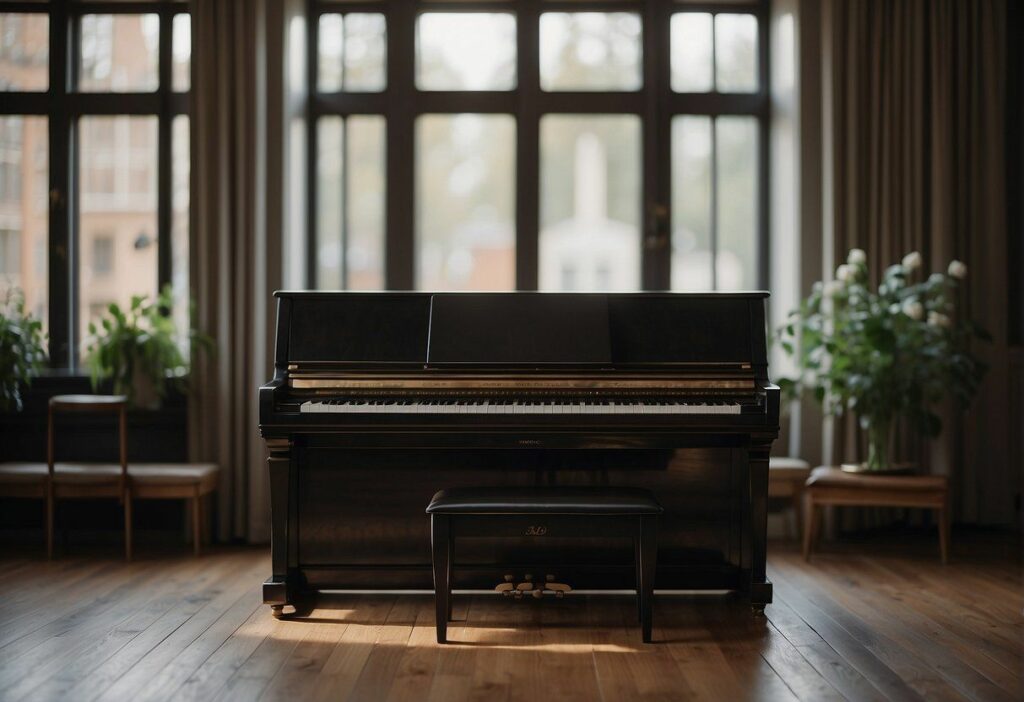
When we sit down to play the piano, it’s not just our fingers that move; our whole body joins the fun. Being able to move around and sway is important for reaching the keys just right, and having a bench with a back would get in the way.
Trust me, there’s a good reason for this—think of it as music in the method!
So, keep reading, and I’ll guide you through the smart design and practical reasons those benches don’t have backs. It’s an exciting topic you won’t want to miss!
Ergonomics and Technique
Maintaining good piano posture and proper technique is key to my success when I play the piano. It’s about striking the right balance between comfort and physical agility.
Posture and Performance
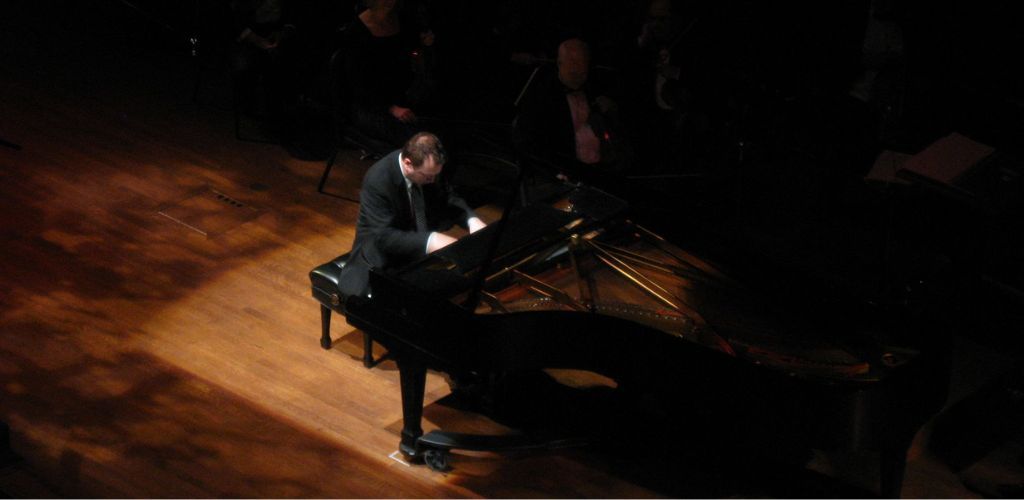
My posture directly affects my playing. When playing the piano, the height and positioning of most piano benches are crucial for aligning the pianist’s sitting bones with the piano keys, allowing for proper support and balance.
This alignment promotes a comfortable playing posture and helps engage the upper body muscles, enabling the pianist to maintain control and finesse while playing.
Ensuring I sit correctly means my arms are at the right height and my wrists are aligned with the keys to prevent strain
Selections and Considerations
When I’m on the prowl for the perfect piano bench, I’ve got to think about more than just the paint job.
It’s like finding a trusty comrade for those musical marathons, and I’ve learned a thing or two about what to look for.
Factors in Choosing the Right Bench
Let’s talk size for a second; for my grand piano, I’m after something about 35 inches wide—snug enough for solos but spacious for duets.
Height is another biggie. I need my feet flat on the ground for that proper posture, so I look for benches about 18 to 24 inches high.
Material is the cornerstone of my bench hunt. I want quality to endure my daily serenades, but my budget can only sometimes afford top-shelf stuff. Solid wood benches offer me that sweet mix of sturdiness and style.
As for color, let’s say I want something that doesn’t clash with my room’s vibe.
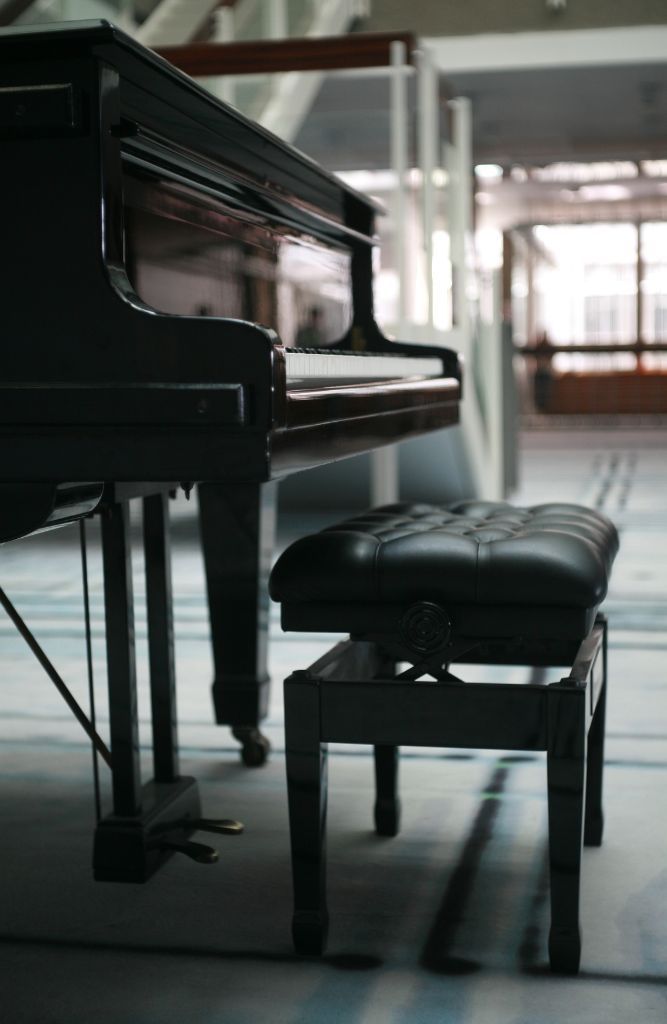
Adjustability and Support Features
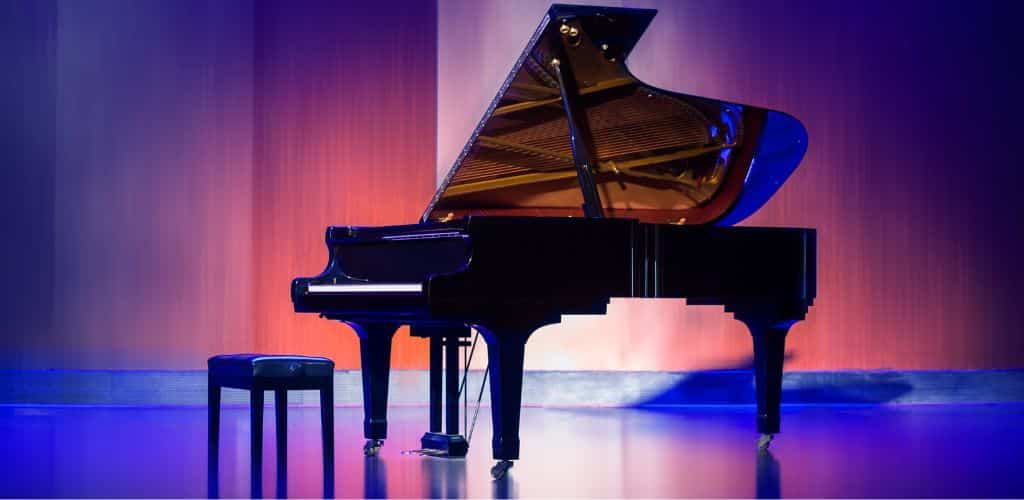
I would make sure to use an adjustable bench. When I can tweak the height with a turn of a knob or a flick of a lever, it’s like the bench was made for me.
Some models have a sly storage area under the seat, perfect for stashing my sheet music and metronome.
Now for the posh stuff: a pneumatic mechanism.
This fancy bit lets me adjust my throne with the grace of a swan—no clunky noises or herculean effort needed. And when I hit the shops, armed with my specs and desires, it’s a real quest.
Advantages of Tradition and Customization
Piano benches marry tradition with customizable features to optimize a pianist’s performance. Let’s explore how tailored benches enhance comfort and look at the various seating preferences available.
Custom-Made Benches for Pianists

I’ve seen my fair share of piano chairs and noticed that a custom-made bench can be a game-changer.
For starters, they’re often adjustable, making them a perfect fit for both children and adults. This means even as I grow—not just in skill but in height—an adjustable bench grows with me.
Custom-made benches are also marvelous when they include storage; I adore having my sheet music and metronome tucked away neatly yet always within reach.
An upholstered bench is an inviting choice. It’s plush and comfortable and makes long practice sessions feel shorter than they are—which is quite a blessing between us.
The Variety of Seating Options
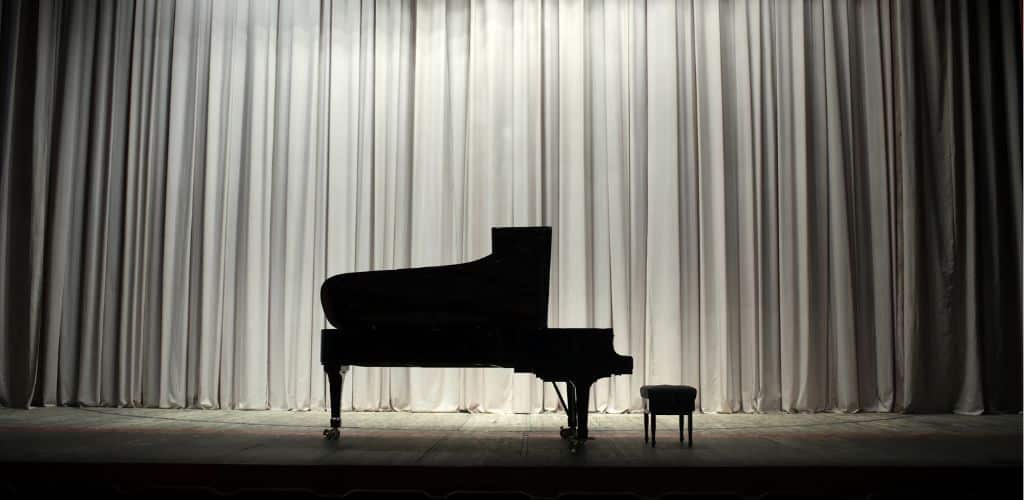
If I’m aiming for extra elegance and comfort during a performance, an upholstered bench is my go-to. While some colleagues go for simplicity and elegance, I treasure the chance to choose a bench that reflects my style.
Children significantly benefit from a bench tailored to their size and preferences. They can sit comfortably without strain, which is crucial for their learning and enjoyment of the piano.
In conclusion, having a suitable bench tailored to me and my playing is as crucial as having a piano that sings to my touch.
Practical Considerations

Exploring the piano bench’s past and design purpose reveals much about its simplistic form. Let’s nip into how these elements shaped the bench we know today.
The Absence of a Backrest: Function Over Form
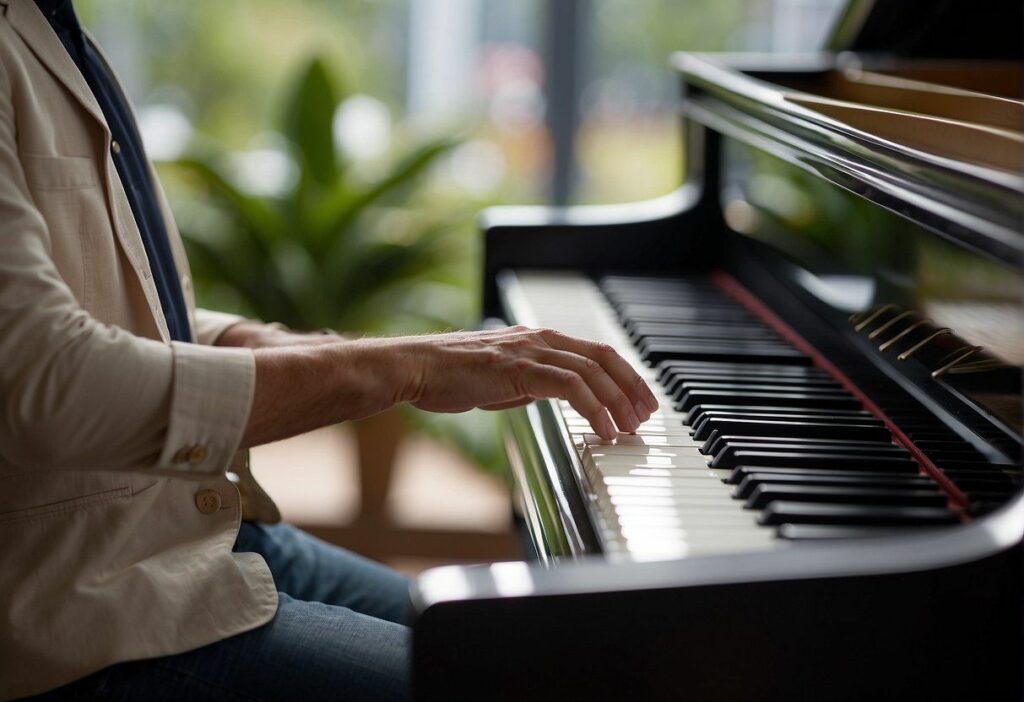
Why did they forget the temptation to add a backrest to the piano chair? The answer is straightforward: freedom of movement is paramount when performing.
Pianists must reach the full expanse of the keyboard, and a backrest would get in the way of their arms and torso.
The unassuming, backless bench also ensures I don’t slouch, promoting a posture that’s as good for my spine as it is for my playing.
So there you have it—practical reasons, with a dash of historic charm, explain why our trusty piano benches stand backless today.
Top Piano Bench
On-Stage KT7800 Three-Position X-Style Bench
The On-Stage KT7800 Three-Position X-Style Bench features a sturdy, adjustable design with three height settings, providing customizable comfort for musicians.
Its cushioned seat and durable construction make it an excellent choice for both practice and performance, ensuring long-lasting support and convenience.
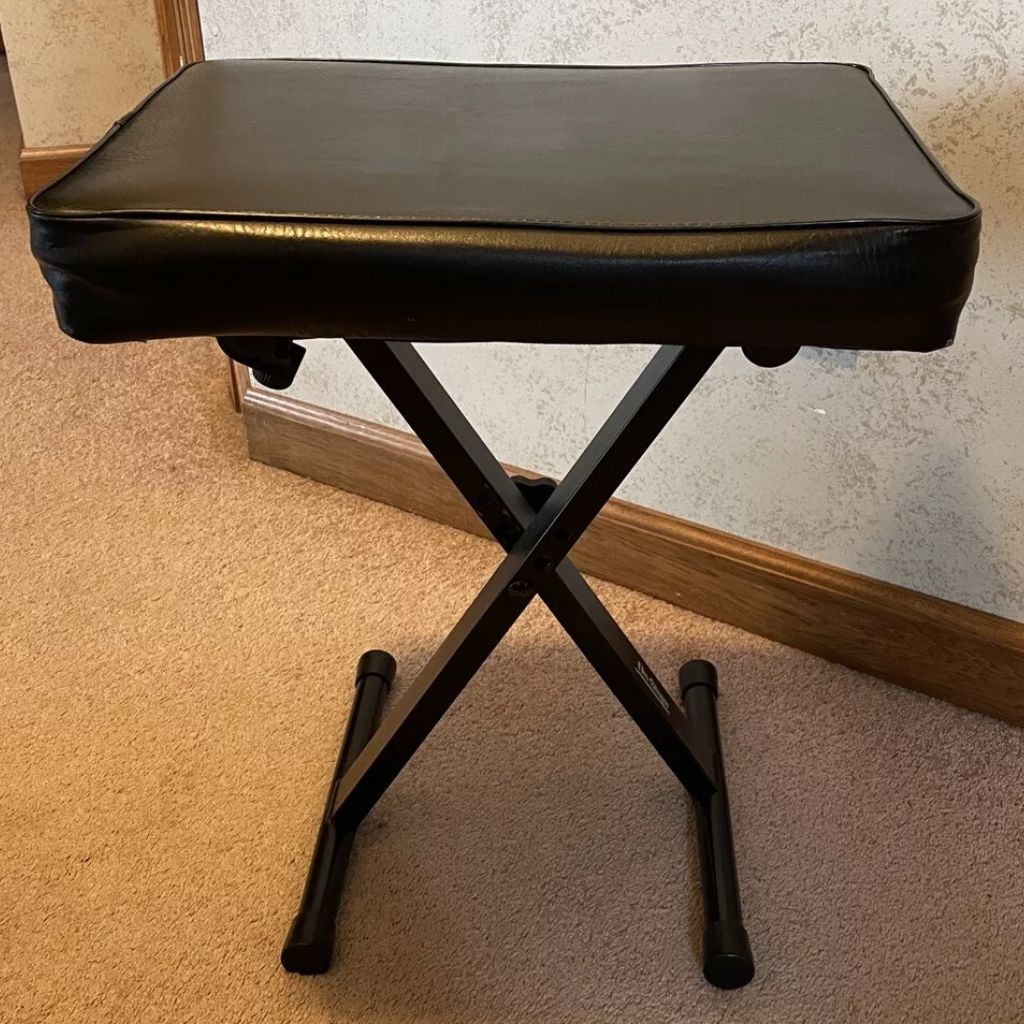
On-Stage KT7800 Three-Position X-Style Bench
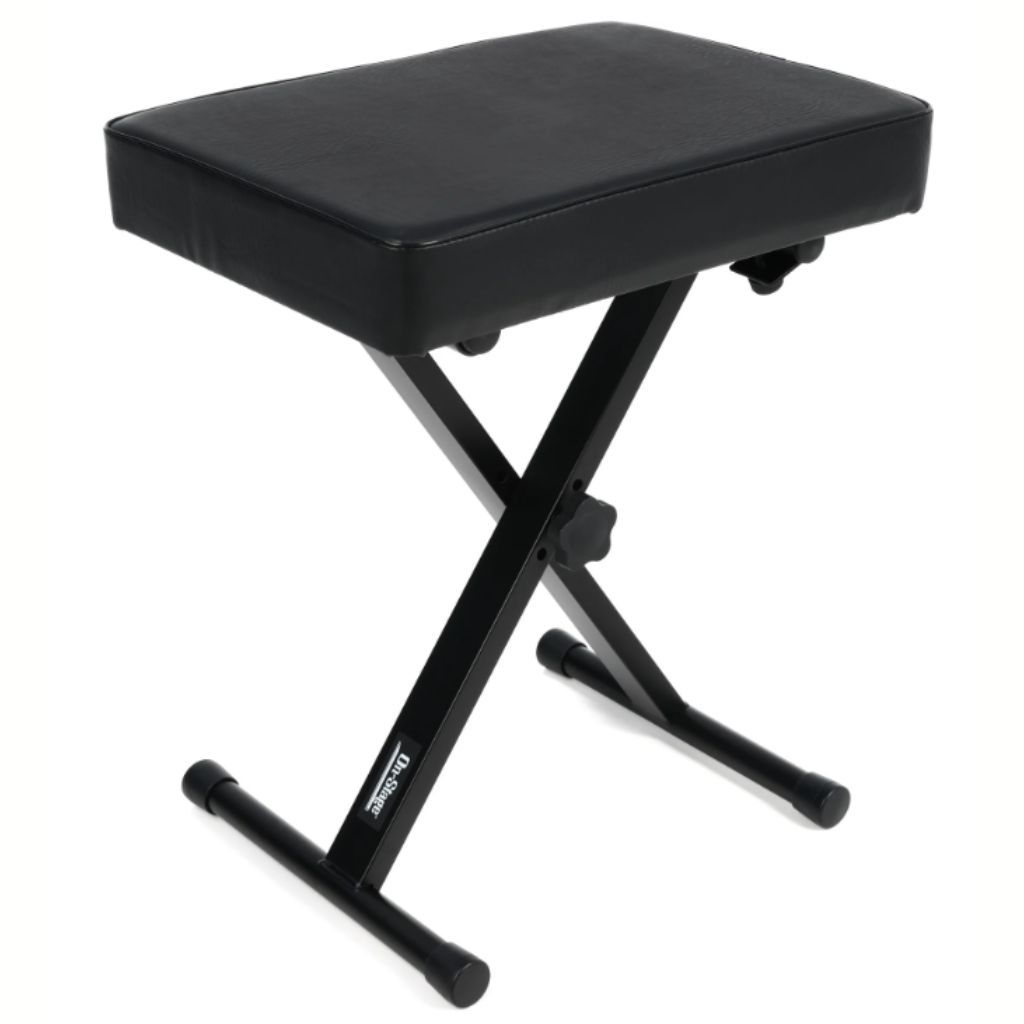
FEATURES: Weight Capacity: 300 lbs
OTHER INFO: All-welded construction
- Legs fold flat for storage and travel
- Weight capacity limitation
When you click ‘Check Price’, you’ll see there are loads of great places to buy this item. Our personal favorite is Sweetwater for the US, and Thomann and Gear4Music for the UK & Europe.
They are the largest music retailers, with excellent customer service, competitive prices, really fast shipping, and the longest guarantees.
The professional musician who wrote this article combined many things,
from the product build, manufacturer’s reputation through to feedback
from other users, to create our famous TedScore™.
Roland RPB-500-BK Piano Bench
The Roland RPB-500-BK Piano Bench features a solid wood construction and a cushioned, tufted seat, offering both durability and exceptional comfort for extended playing sessions.
Its adjustable height mechanism and elegant black finish make it a versatile and stylish addition to any pianist’s setup.
Roland RPB-500-BK Piano Bench
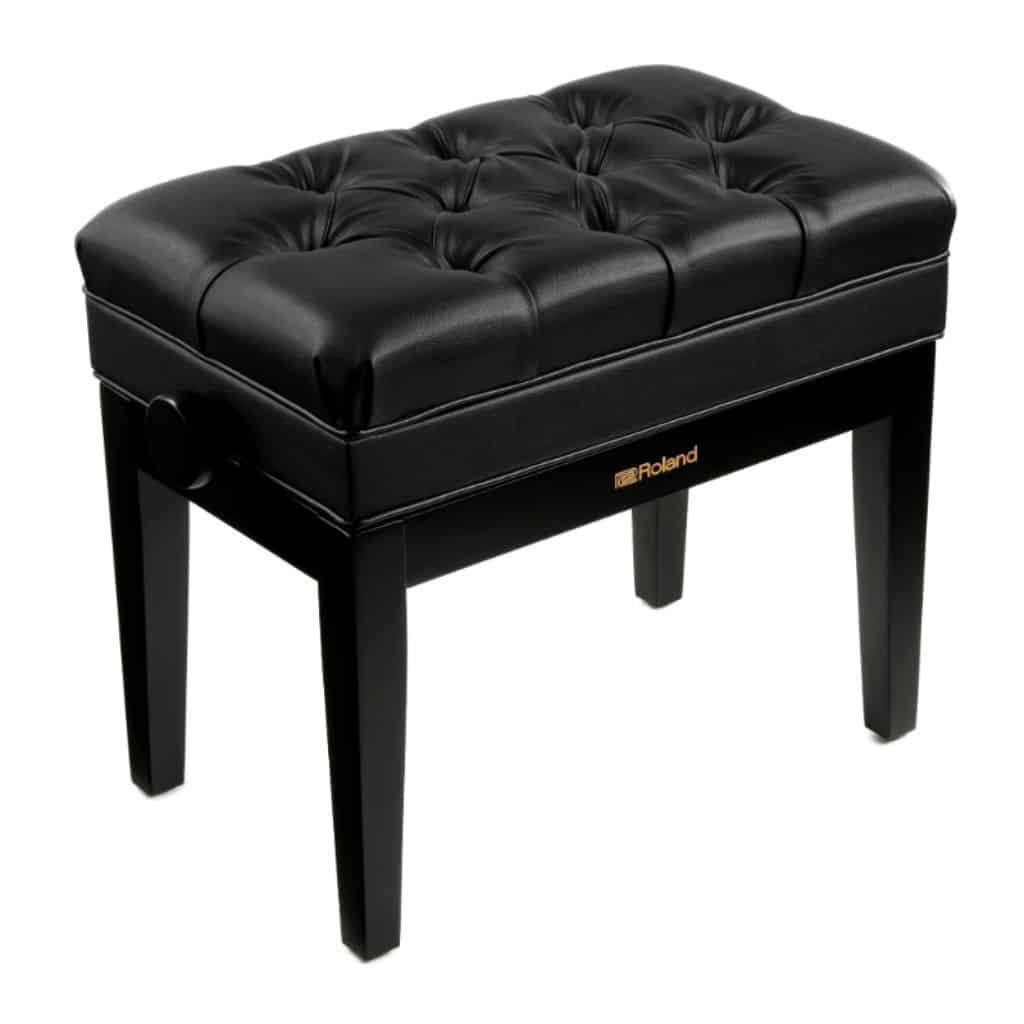
FEATURES: Sturdy, solid wood bench with thick cushion for comfortable playing
OTHER INFO: Adjustable height for your preferred playing position
- Storage compartment under cushion
- Higher price point compared to some other piano benches
When you click ‘Check Price’, you’ll see there are loads of great places to buy this item. Our personal favorite is Sweetwater for the US, and Thomann and Gear4Music for the UK & Europe.
They are the largest music retailers, with excellent customer service, competitive prices, really fast shipping, and the longest guarantees.
The professional musician who wrote this article combined many things,
from the product build, manufacturer’s reputation through to feedback
from other users, to create our famous TedScore™.
Casio CB-7 Piano Bench
The Casio CB-7 Piano Bench features a sturdy wooden construction and a comfortable padded seat, providing reliable support and comfort for extended practice sessions.
Its sleek design and fixed height make it an ideal complement to any digital or acoustic piano setup.
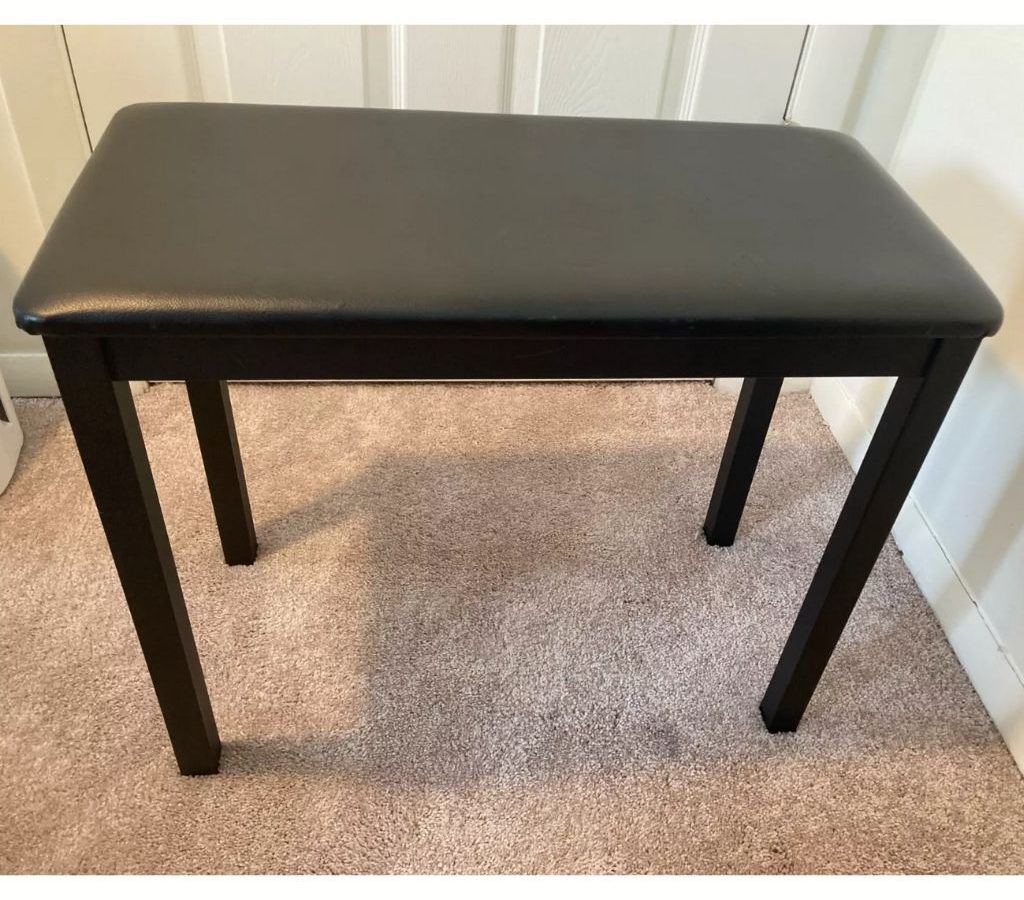
Casio CB-7 Piano Bench
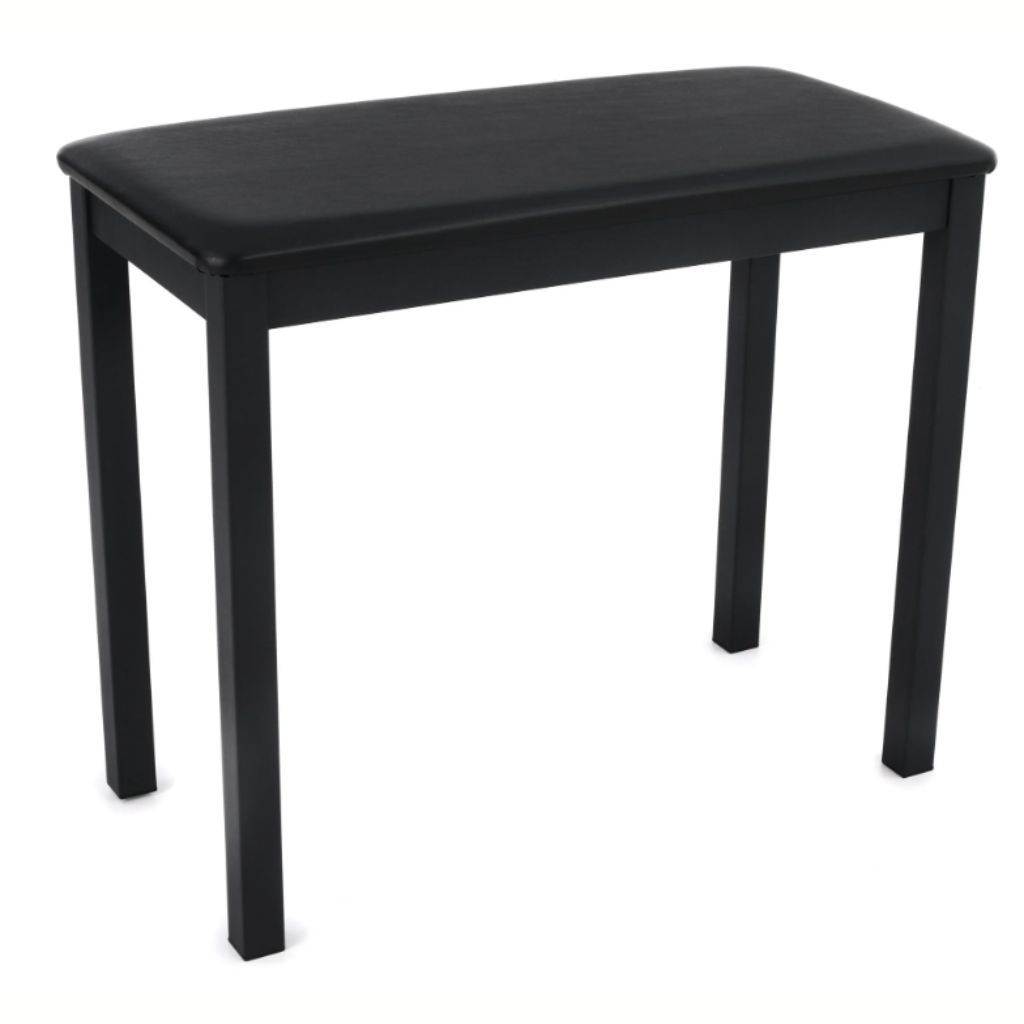
FEATURES: Padded bench for piano and keyboard players
OTHER INFO: Metal frame for durability
- Sturdy construction ensures stability
- The cushioning is too firm or thin for the player's comfort
When you click ‘Check Price’, you’ll see there are loads of great places to buy this item. Our personal favorite is Sweetwater for the US, and Thomann and Gear4Music for the UK & Europe.
They are the largest music retailers, with excellent customer service, competitive prices, really fast shipping, and the longest guarantees.
The professional musician who wrote this article combined many things,
from the product build, manufacturer’s reputation through to feedback
from other users, to create our famous TedScore™.
Why don't piano benches have backs?
Summary
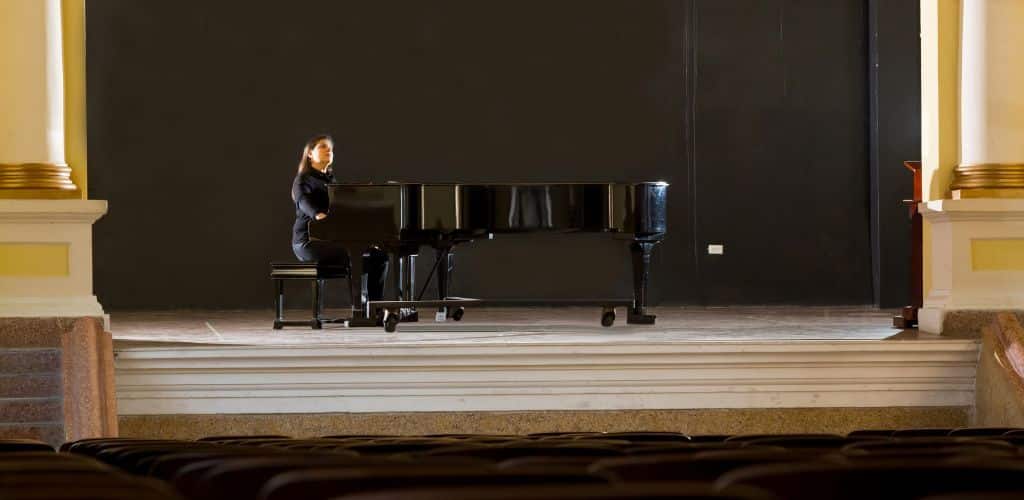
Backless piano benches aren’t just a historical quirk but a clever design choice. Ditching the backrest gives these benches the limberness to sway and reach with the melodies.
Indeed, the freedom of movement is essential, allowing us to express ourselves fully without constraint.
The lightweight nature of these benches makes portability easy. Moreover, encouraging proper posture and balance is a subtle nudge toward mastering the art of piano playing.
This design’s simplicity elegantly combines function with tradition, giving the feeling of being connected to the piano without anything getting in the way.
Hold up, we’re not finished yet…
Check out this comprehensive ranking of piano brands to find the perfect instrument for your musical journey!
FAQ's
Pianos have backless benches instead of chairs because benches allow for a more consistent and comfortable playing position. They provide stable support for the pianist’s body and allow for proper posture and positioning while playing.
Pianists sit forward to achieve better alignment with the piano. This allows for optimal hand positioning and control over the keys while engaging core muscles for stability and agility during performance.
Piano benches can be ergonomic, designed to promote proper posture and support the pianist’s body during long practice or performance sessions. However, the level of ergonomic design may vary depending on the specific make and model of the bench.
The main difference between an organ bench and a piano bench is the height and design. Organ benches are typically higher and may feature a hinged seat for storage, while piano benches are lower and often have a simple, non-adjustable design.











I’ve always stuck with the traditional piano bench that came with my old upright, but lately, I’ve been experiencing some discomfort during longer practice sessions. Your section on ergonomics and posture really got me thinking. Does anyone have recommendations for a good, supportive piano bench that won’t break the bank? Looking for something that’s kind to both my back and my wallet.
Awesome, thanks for the tip, BudgetKeys! I’ll check it out.
I’ve had great luck with the Casio CB-7! Affordable and comfortable.
Adjustability and support features, eh? Seems like a lot of fancy talk for just choosing a bench. Back in my day, we just used whatever bench was there and focused on playing. Don’t see why there’s such a fuss now. Anyone else think we’re overcomplicating things?
Hey Dawn, love how you dive into why piano benches don’t have backs. Always wondered about that. Cheers for the insight!
Really appreciated the section on custom-made benches! Never realized how much of a difference they can make for a pianist’s posture and performance. Anyone else tried going custom? Worth it?
Got a place you recommend for custom benches?
Absolutely worth it for me. Custom benches changed the way I play, no more back pain!